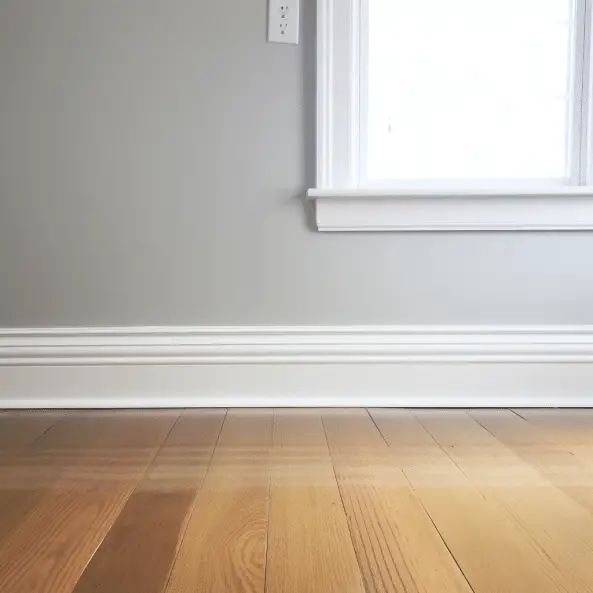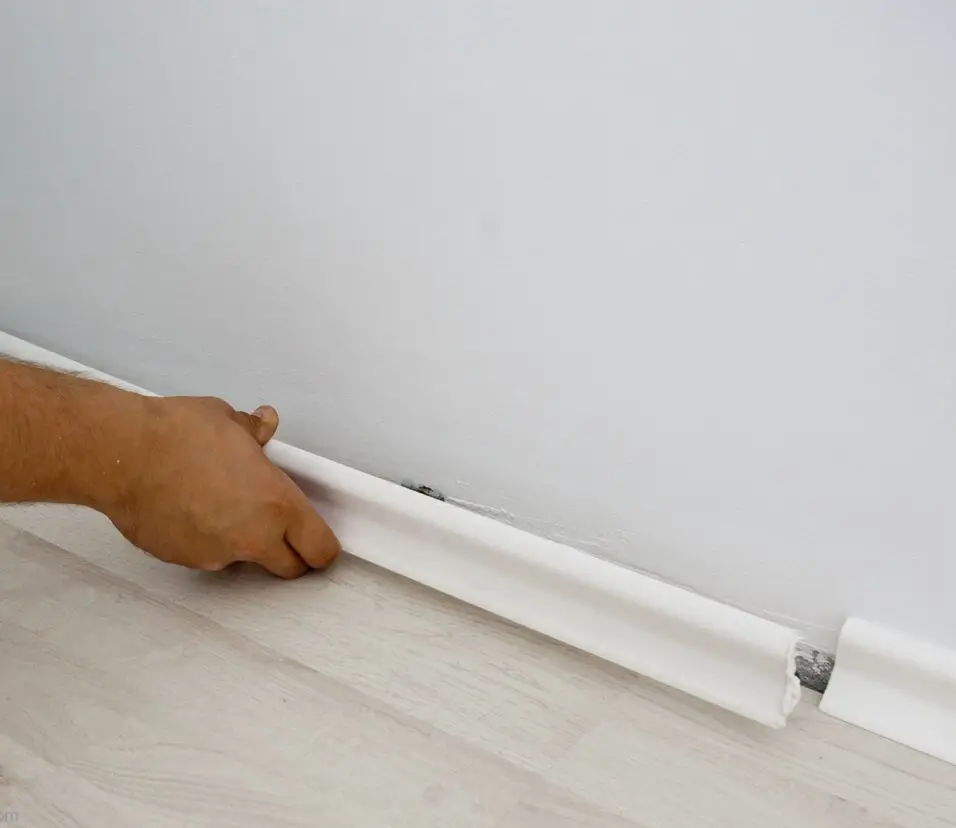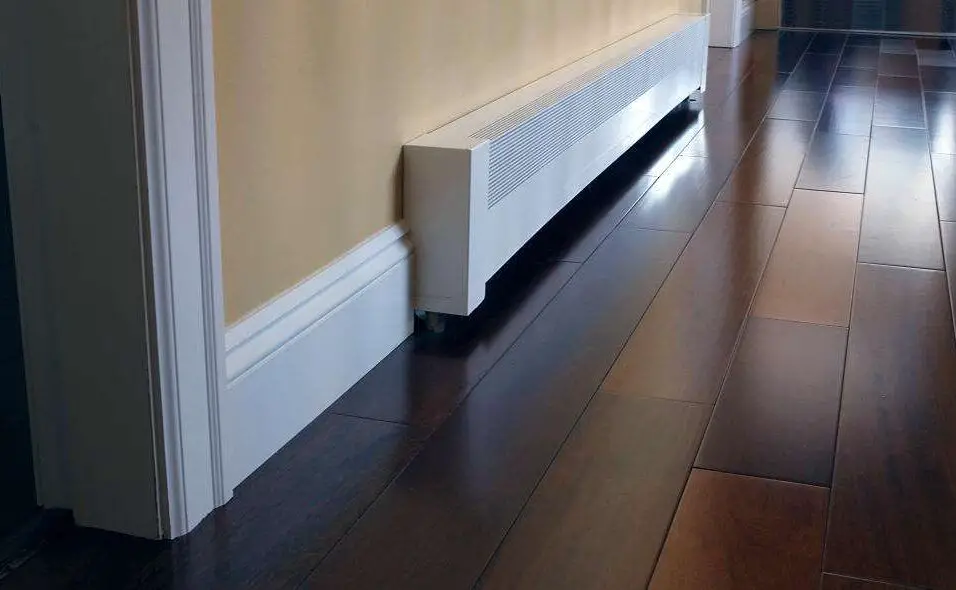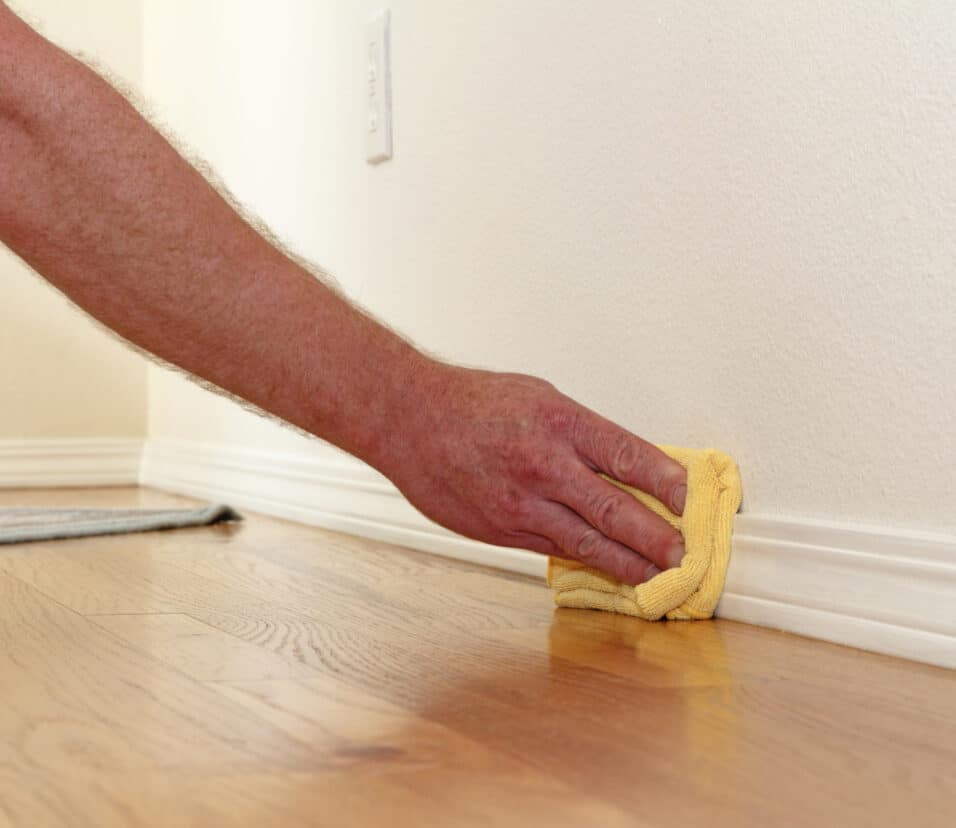How To Attach Baseboard To Brick
Introduction
How To Attach Baseboard To Brick: Attaching baseboard to brick can be a challenging task, but with the right tools and techniques, it is definitely achievable. Whether you are looking to add a decorative touch to your brick walls or simply want to cover up unsightly gaps, gas baseboards can provide a polished and finished look to any room. In this article, we will guide you through the step-by-step process of attaching baseboard to brick, ensuring a secure and professional installation.
Firstly, it is important to gather all the necessary tools and materials before starting the installation process. You will need a measuring tape, a pencil, a miter saw or a coping saw, a drill with masonry drill bits, construction adhesive, and finishing nails. Make sure to choose baseboards that are suitable for outdoor use and can withstand the elements if you are attaching them to an exterior brick wall.
Next, you will need to measure and mark the desired height for your baseboard. Use a measuring tape to determine the height and a pencil to mark the spots where the baseboard will be attached. It is important to ensure that the baseboard is level, so use a level to double-check your measurements and adjust if necessary.
Once you have marked the spots for attachment, it is time to drill pilot holes into the brick. Use a drill with a masonry drill bit to create small holes at the marked spots. These pilot holes will make it easier to insert the finishing nails and prevent the brick from cracking or splitting. Be sure to wear safety goggles and gloves while drilling to protect yourself from any flying debris.

Should I nail or glue baseboards?
Baseboards help keep your room looking finished and balanced. Use construction adhesive or nails to attach baseboards. Nailing baseboards can keep them straighter and free from warping over time. Gluing your baseboards can take much less time and effort.
Nailing baseboards
Nailing baseboards is the traditional method of installation and is widely used in construction and remodeling projects. It involves using finishing nails to secure the baseboards to the wall. One of the main advantages of nailing baseboards is that it provides a strong and durable hold. Nails can withstand a significant amount of weight and pressure, ensuring that the baseboards stay in place for years to come.
Another benefit of nailing baseboards is that it allows for easy removal and replacement. If you ever need to remove or replace a baseboard, you can simply pry out the nails and take it off. This can be particularly useful if you want to change the style or color of your baseboards in the future.
Gluing baseboards
Gluing baseboards is a newer method of installation that has gained popularity in recent years. It involves using construction adhesive to bond the baseboards to the wall. One of the main advantages of gluing baseboards is that it provides a seamless and clean look. Since there are no visible nail holes, the baseboards appear more polished and professional.
In addition, gluing baseboards can be a quicker and easier installation method. With nails, you need to carefully measure and align each board before nailing it in place. This can save you time and effort, especially if you are working on a large project with many baseboards.
How do you glue baseboard to concrete?
- Cut a piece of baseboard molding for each wall using the measurements you found in Step 2 using a saw
- Press the molding to the concrete wall. Construction adhesive holds the molding immediately to the wall
- Allow the adhesive to cure for 24 hours or however long the packaging indicates
Gluing baseboard to concrete can be a challenging task, but with the right materials and techniques, it can be done effectively. Whether you are renovating your home or installing new baseboards, gluing them to concrete can provide a clean and finished look to your space. In this answer, we will discuss the steps involved in gluing baseboard to concrete.
Step 1: Prepare the surface
The first step in gluing baseboard to concrete is to prepare the surface. Start by cleaning the concrete thoroughly to remove any dirt, dust, or debris. Use a broom or vacuum cleaner to sweep the area, and then use a damp cloth or mop to wipe the surface clean. This will ensure that the adhesive sticks properly to the concrete.
Step 2: Choose the right adhesive
Next, you need to choose the right adhesive for gluing the baseboard to concrete. There are various types of adhesives available in the market, such as construction adhesive or epoxy adhesive. It is important to select an adhesive that is specifically designed for bonding wood to concrete. Read the instructions on the adhesive carefully to ensure that it is suitable for your project.
Step 3: Apply the adhesive
Once you have chosen the adhesive, it is time to apply it to the baseboard.
Step 4: Press the baseboard onto the concrete
After applying the adhesive, carefully press the baseboard onto the concrete. Make sure to align it properly and apply even pressure to ensure a strong bond. You can use a rubber mallet or a hammer with a scrap piece of wood to gently tap the baseboard into place. Continue this process until all the baseboards are glued to the concrete.
What is the best adhesive for wood to brick?
The answer is simple – CT1. CT1 is the best glue for wood to brick because of its unique TRIBRID® Technology. It delivers fast and effective results and is the perfect adhesive for bonding wood to brick. There are many reasons why CT1 is the best glue for sticking wood to brick, but here are just a few.
When it comes to bonding wood to brick, finding the right adhesive is crucial. The combination of these two materials requires a strong and durable bond that can withstand various environmental conditions. There are several adhesives available in the market, each with its own set of advantages and disadvantages. In this article, we will explore some of the best adhesives for wood to brick bonding.
Epoxy
Epoxy is a popular choice for bonding wood to brick due to its exceptional strength and durability. It consists of two components – resin and hardener – that need to be mixed together before application. Epoxy forms a strong bond that can withstand heavy loads and extreme temperatures. It is also resistant to moisture and chemicals, making it suitable for both indoor and outdoor applications.
Polyurethane
Polyurethane adhesive is another excellent option for bonding wood to brick. It is known for its flexibility and ability to absorb vibrations, making it ideal for applications where movement is expected. Polyurethane adhesive also provides a strong bond and is resistant to water and heat. However, it may take longer to cure compared to other adhesives.
Construction adhesive
Construction adhesive is a versatile adhesive that can bond a wide range of materials, including wood and brick. It is available in various formulations, such as solvent-based and water-based. Construction adhesive offers a strong bond and is resistant to moisture and temperature changes. It is easy to apply and provides a quick initial grab, allowing for immediate use.
Polyvinyl acetate (PVA) glue
PVA glue, also known as wood glue, is a popular adhesive for woodworking projects. While it may not be as strong as epoxy or polyurethane, it can still provide a reliable bond between wood and brick. PVA glue is easy to use, dries clear, and is non-toxic. However, it is not suitable for outdoor applications or areas exposed to moisture.
When choosing an adhesive for bonding wood to brick, it is important to consider factors such as strength, durability, flexibility, and resistance to moisture and temperature. Epoxy, polyurethane, construction adhesive, and PVA glue are some of the best options available. It is recommended to follow the manufacturer’s instructions for proper application and curing time to ensure a successful bond.
What is the easiest baseboard to install?
Vinyl Baseboard
It’s also fairly easy to install, making it a simple weekend project you can do on your own. Sold in rolls, vinyl baseboard can be easier to work with than wood, and typically has a long life span, requiring little maintenance.
When it comes to installing baseboards, there are several options available in the market. However, if you are looking for the easiest baseboard to install, there are a few factors to consider. Ease of installation can depend on the material, design, and size of the baseboard. In this article, we will explore some of the easiest baseboards to install.
One of the easiest baseboards to install is the prefinished baseboard.
These baseboards come already finished with paint or stain, eliminating the need for additional finishing work. They are typically made of wood or composite materials and are available in various styles and sizes. Prefinished baseboards often come with a simple installation system, such as a clip or adhesive, making them easy to install for both professionals and DIY enthusiasts.
Another easy-to-install option is the peel-and-stick baseboard.
As the name suggests, these baseboards have an adhesive backing that allows for quick and hassle-free installation. Peel-and-stick baseboards are typically made of vinyl or PVC, which makes them lightweight and easy to handle. They are available in a wide range of designs and sizes, allowing you to choose the one that best suits your needs and preferences.
If you are looking for a baseboard that requires minimal tools and expertise, consider the snap-on baseboard.
These baseboards feature a snap-on design that allows for easy installation without the need for nails or screws. Snap-on baseboards are typically made of plastic or composite materials and are available in various colors and styles. They are a popular choice for those who want a quick and easy installation process.
Lastly, the self-adhesive baseboard is another option that is easy to install.
These baseboards come with a built-in adhesive strip that allows for quick and secure installation. Self-adhesive baseboards are typically made of foam or rubber and are available in various sizes and designs. They are a great choice for those who want a hassle-free installation process without the need for additional tools or materials.
To attach baseboard to brick, you will need a few specific tools and materials. Firstly, you will need a masonry drill bit and a power drill to create holes in the brick for the fasteners. It is important to use a masonry drill bit specifically designed for drilling into brick or concrete. Additionally, you will need screws or masonry anchors to secure the baseboard to the brick. Make sure to choose screws or anchors that are suitable for outdoor use and can withstand the weight of the baseboard.
In terms of materials, you will need the baseboard itself, which can be made of wood, PVC, or another suitable material. It is important to choose a baseboard that is resistant to moisture and can withstand outdoor conditions. You may also need caulk or adhesive to provide additional stability and weatherproofing. Finally, you will need a level and a tape measure to ensure that the baseboard is installed straight and evenly.
Overall, the tools and materials needed to attach baseboard to brick include a masonry drill bit, power drill, screws or masonry anchors, baseboard material, caulk or adhesive, level, and tape measure. By having these tools and materials ready, you can ensure a secure and professional installation of baseboard on brick surfaces.
What tools and materials are needed to attach baseboard to brick?
When attaching baseboard to brick, you will need a few specific tools and materials to ensure a secure and professional installation. Firstly, you will need a masonry drill bit and a power drill to create holes in the brick for the fasteners. It is important to use a masonry drill bit specifically designed for drilling into brick or concrete to prevent damage to the material.
In addition to the drill and drill bit, you will also need a hammer, a level, a tape measure, and a pencil for marking the placement of the baseboard. These tools will help you accurately measure and align the baseboard before attaching it to the brick. You will also need screws or masonry anchors, depending on the weight and size of the baseboard, to secure it to the brick.
Overall, the tools and materials needed to attach baseboard to brick include a masonry drill bit, a power drill, a hammer, a level, a tape measure, a pencil, and screws or masonry anchors. Having these items on hand will ensure a smooth and successful installation process.
Are there any specific techniques or tips for securely attaching baseboard to brick?
When it comes to securely attaching baseboard to brick, there are a few techniques and tips that can help ensure a strong and durable installation. Firstly, it is important to choose the right adhesive or fasteners for the job. Masonry adhesive is often recommended for attaching baseboard to brick, as it provides a strong bond and is specifically designed for use on masonry surfaces. Alternatively, masonry screws can also be used to securely attach the baseboard to the brick.
Before attaching the baseboard, it is crucial to properly prepare the brick surface. This involves cleaning the brick thoroughly to remove any dirt, dust, or debris that could interfere with the adhesive or fasteners. Additionally, it may be necessary to roughen the surface of the brick using sandpaper or a wire brush to create a better bonding surface.
When applying the adhesive or fasteners, it is important to apply even pressure to ensure a secure attachment. This can be done by using a caulking gun to apply the adhesive in a continuous bead along the back of the baseboard, or by evenly spacing and driving the masonry screws into the brick. It is also recommended to use a level to ensure the baseboard is straight and aligned properly before the adhesive or fasteners fully set.
Are there any potential challenges or considerations to keep in mind when attaching baseboard to brick?
When attaching baseboard to brick, there are a few potential challenges and considerations that you should keep in mind. Firstly, drilling into brick can be more difficult than drilling into other materials, so it is important to use the right tools and techniques. You will need a masonry drill bit and a hammer drill to effectively drill into the brick without causing damage.
Another consideration is the type of fasteners you use to attach the baseboard to the brick. It is recommended to use masonry screws or anchors that are specifically designed for use with brick. These will provide a secure hold and prevent the baseboard from coming loose over time.
Additionally, you should be cautious of the location of any electrical wiring or plumbing behind the brick wall. Before drilling into the brick, it is important to locate and mark the position of any potential hazards to avoid damaging them.
Are there any alternative methods or products for attaching baseboard to brick that may be worth considering?
Yes, there are alternative methods and products that can be considered when attaching baseboard to brick. One option is to use adhesive or construction glue specifically designed for bonding wood to masonry surfaces. These adhesives are typically strong and durable, providing a secure attachment between the baseboard and the brick. It is important to choose an adhesive that is suitable for both the type of baseboard material and the brick surface.
Another alternative method is to use metal brackets or clips to attach the baseboard to the brick. These brackets or clips can be screwed into the baseboard and then attached to the brick using masonry screws or anchors. This method provides a sturdy and reliable attachment, especially for heavier baseboards.
When considering alternative methods or products, it is important to carefully evaluate their suitability for the specific project and the desired aesthetic outcome. Consulting with a professional or experienced contractor can provide valuable insights and recommendations for the best alternative method or product to use when attaching baseboard to brick.
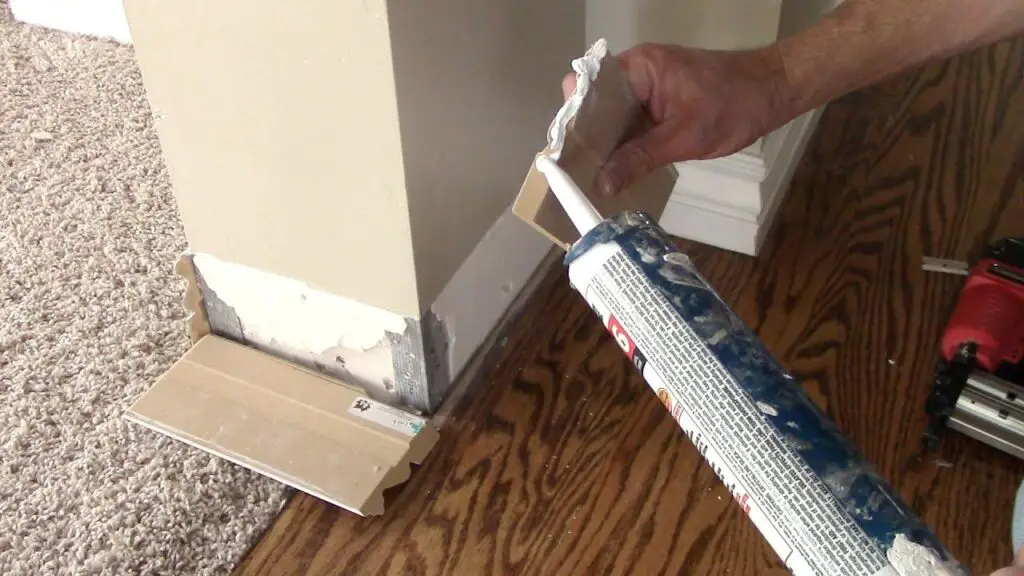
Conclusion
Attaching baseboard to brick can be a challenging task, but with the right tools and techniques, it is definitely achievable. By following the steps outlined in this guide, you can ensure a secure and professional-looking installation. Remember to measure and mark the placement of the baseboard accurately, as this will determine the overall appearance of the finished project.
One important aspect to consider when attaching install baseboard to brick is the type of adhesive or fasteners to use. Construction adhesive is a popular choice as it provides a strong bond and is easy to work with. However, if you prefer a more temporary solution, you can opt for masonry screws or anchors. Whichever method you choose, make sure to select the appropriate size and length of fasteners to ensure a secure attachment.
Another crucial step in attaching baseboard to brick is pre-drilling holes. This is especially important when using screws or anchors, as it helps prevent the brick from cracking or splitting. Use a masonry drill bit that matches the size of your fasteners and drill the holes at the marked locations. Be sure to clean out any debris from the holes before inserting the fasteners.




